Ryan Forster used to be the golf pro at Makai Golf Club, but a chance encounter with a honeybee hive sent him on a different path, one that he’s still walking today.
Forster is the executive director of the Kauai Bee Team, a 501 (c) 3 nonprofit dedicated to saving honeybees and providing nutrient-dense honey to the community — and the vision for organization formed at Makai Golf Club, where he was living a childhood dream as a golf pro.
Several years ago, Forster received a call at work from a golf course neighbor. The homeowner alerted him of a wasp nest on a tree branch that stretched over onto her property. She was calling to tell Forster she’d be sending Makai Golf Course the bill from a pest control company she’d contacted for removal.
So, Forster jumped into his truck and drove to the property to try and help with the situation.
“When I arrived, I realized it was a honeybee swarm. I grabbed a cardboard box, jumped on the hood of my truck, and knocked the hive off the tree into the box,” said Forster.
Then, he carved a little hole in the box and drove it into the mountains later that evening, releasing it in a place where the bees could relocate the hive away from residential areas.
“The experience was amazing and rekindled some of my childhood knowledge,” Forster said.
That was apparently the end of the honeybee encounter — until word spread around the island.
”Living on Kaua‘i, we all know about the coconut wireless, and before I knew it, I was receiving 2-3 calls a month to remove bees from people’s homes,” said Forster.
The bee business was booming so well by 2017 that Forster resigned from Makai Golf Course and devoted his attention to the Kaua‘i Bee Team. Over time, he started raising the rescued bees instead of releasing them back into the wild. The bees started producing honey, and then Forster had to figure out how to extract honey and other bee products without disturbing the bees, themselves.
“I figured out a unique way to do the honey through air pressure,” said Forster. “And when I had it tested it had incredible medicinal value, so I just had the idea to start getting it to people who need it.”
Forster said when the results of the pollen tests came back; his products tested off the charts at 200,000 fermented pollen corns per gram — numbers in typical honey range from zero to 5,000.
Forster said bees have to visit about four million flowers to make enough honey for a 16 oz jar. One teaspoon represents more than 10,000 flowers.
“Just ingesting a little bit of honey puts a lot of nutrients in a lot of these hidden medical plants into your system, “ said Forster.
After realizing the rich medicinal value of his honey, Forster started the “Honey for Hospice” program, which donates a jar of honey to every hospice patient. It was so successful that he opened up the program to cancer patients after a year. The Kauai Bee Team also now makes skin ointment called “Simple Skin Therapy” that is a natural sunblock and skin healer. The nonprofit is also proudly plastic-free and provides youth and public education as well.
•••
Stephanie Shinno, features and community reporter, can be reached at 245-0424 or sshinno@thegardenisland.com.


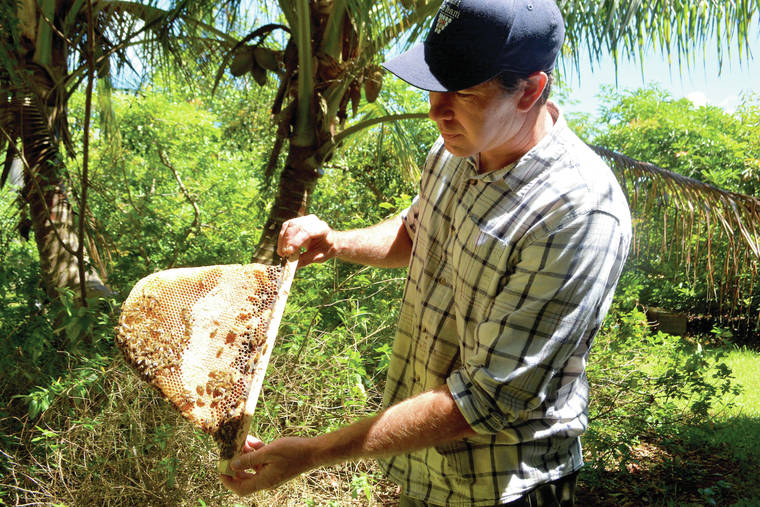
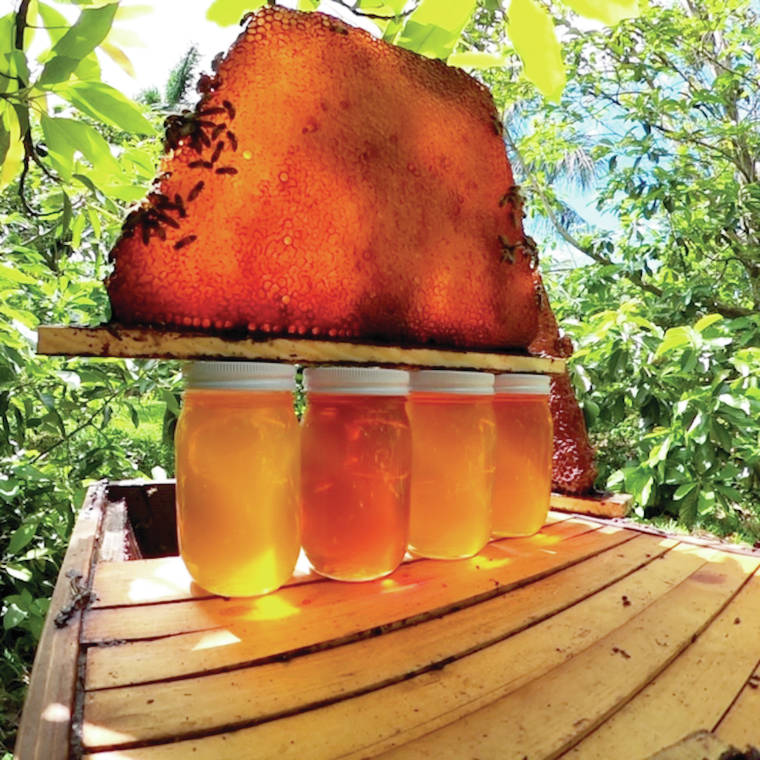

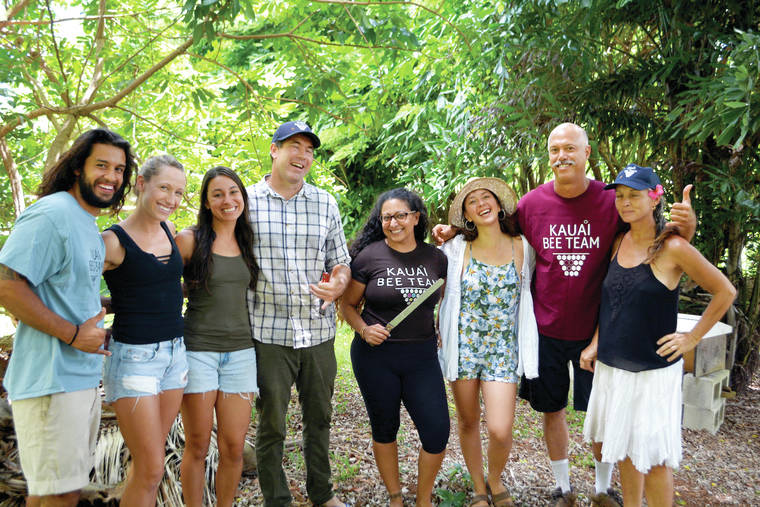
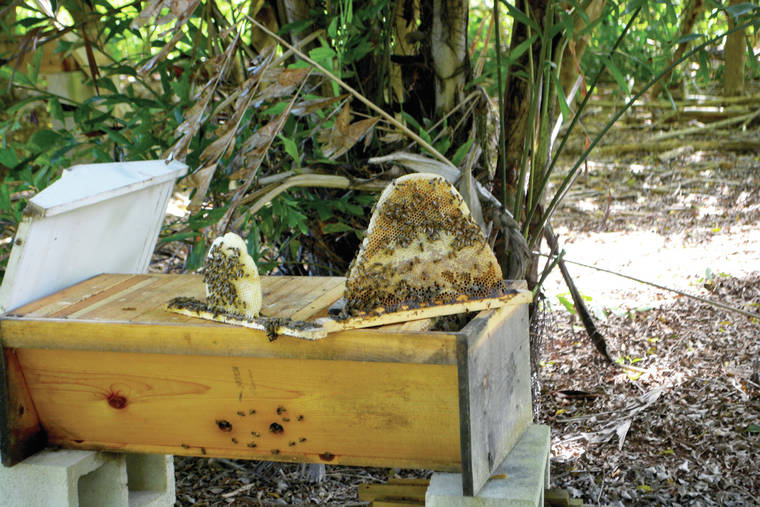
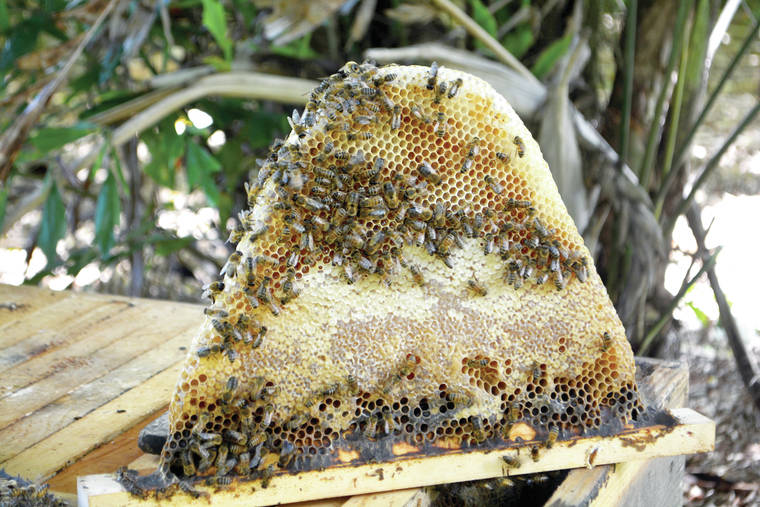
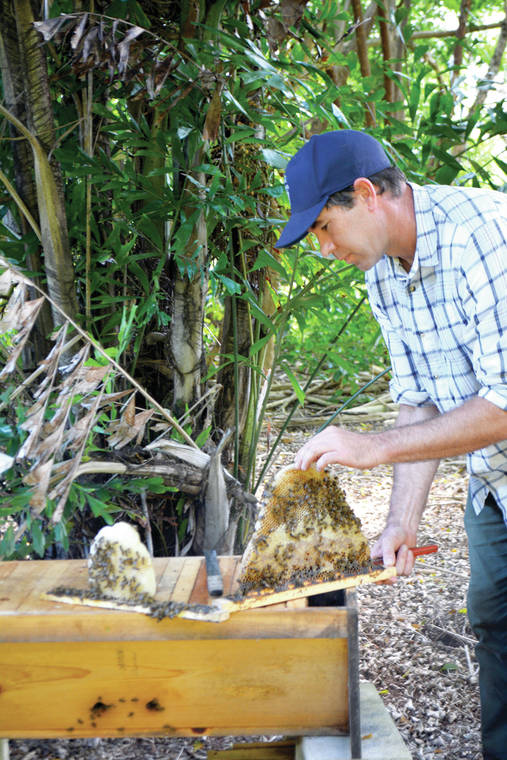
Hi, Ryan. Has a Kauai bee group talked about testing KI honey for pesticides? Here are 3 informative articles that you might be interested in. As a former golf pro, you must be familiar w/pesticide/herbicide use to keep the grounds lush…?
https://www.beeculture.com/catch-the-buzz-fda-finds-glyphosate-in-honey-what-now/
https://www.pesticideresearch.com/site/pri-resource-centers/bee-resource-center/taking-samples/
https://www.outsideonline.com/2151976/ongoing-hawaiian-battle-shows-real-gmo-problem